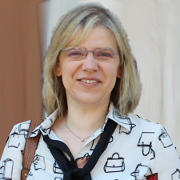Advances in 3D Scanning Analysis for Cultural Heritage Applications
A special issue of Sustainability (ISSN 2071-1050). This special issue belongs to the section "Tourism, Culture, and Heritage".
Deadline for manuscript submissions: closed (31 December 2021) | Viewed by 723
Special Issue Editors
Interests: 3D acquisition; computational geometry; feature recognition; reverse engineering; virtual prototyping; shape analysis; 3D shape recognition and classification
Special Issues, Collections and Topics in MDPI journals
Special Issue Information
Dear Colleagues,
According to “UNESCO, ICCROM, ICOMOS (1994)” (Nara Document on Authenticity, article 13. http://www.international.icomos.org/charters/nara e.htm/) recommendations, a primary objective of cultural heritage (CH) is preservation of the authenticity and integrity of archaeological escavations and finds. At present, important activities for preservation include:
- Archaeological excavation including field and underwater excavations;
- Archaeological research, devoting to finding the historical, artistic, and scientific value of relics and investigating the historical process, the state of civilization, and the technological level;
- Archive management, making possible to collect, record, organize, add, delete, and modify information about relics.
- Conservation, monitoring, storing safely, and restoring heritage items;
- Exhibition, including exhibitions in museums, onsite, or on the Web;
- Utilization of cultural heritage, realized by film, television, game production, imitation, printing, and publications.
The traditional techniques for performing the above-mentioned preservation activities in CH have proven to be time-consuming and not repeatable or reproducible, as they strongly depend on operators’ skills. For these reasons, the traditional techniques have been progressively flanked by digital ones, which have also led to the introduction of new revolutionary approaches to preservation activities.
All these new methodologies require a three-dimensional digitalization of archeological escavations and finds; the current techniques are: acquisition range from images and videos (e.g., photogrammetry, depth-cameras, structure from motion), laser scanning techniques (e.g., structured light 3D scanning, laser 3D scanning), spectral imagining (e.g., reflectance spectral imaging, multi- or hyper- spectral imaginig, X-ray fluorescence spectrometry). Nevertheless, the geometric data, as those obtained by means of each of the above mentioned technicques, cannot be directly used for finds preservation: it only provides low-level information limited to point coordinates and the normal of triangles enclosing it. Data processing becomes, therefore, necessary in order to perform each of above-mentioned preservation activities.
This special issue, entitled "Advances in 3D Scanning analysis for Cultural Heritage Applications", will focus on all innovative aspects of the research and development related in this field. Original research papers that focus on the development and experimental verification of computer-based algorithms for archaeological fields are welcome.
We invite authors to contribute both reviews and original research articles that will illustrate and stimulate the continuing research in this field. Reviews should provide an up-to-date overview of the current state-of-the-art in a particular application and include main results from several research groups.
Prof. Dr. Luca Di Angelo
Dr. Silvia Biasotti
Guest Editors
Manuscript Submission Information
Manuscripts should be submitted online at www.mdpi.com by registering and logging in to this website. Once you are registered, click here to go to the submission form. Manuscripts can be submitted until the deadline. All submissions that pass pre-check are peer-reviewed. Accepted papers will be published continuously in the journal (as soon as accepted) and will be listed together on the special issue website. Research articles, review articles as well as short communications are invited. For planned papers, a title and short abstract (about 100 words) can be sent to the Editorial Office for announcement on this website.
Submitted manuscripts should not have been published previously, nor be under consideration for publication elsewhere (except conference proceedings papers). All manuscripts are thoroughly refereed through a single-blind peer-review process. A guide for authors and other relevant information for submission of manuscripts is available on the Instructions for Authors page. Sustainability is an international peer-reviewed open access semimonthly journal published by MDPI.
Please visit the Instructions for Authors page before submitting a manuscript. The Article Processing Charge (APC) for publication in this open access journal is 2400 CHF (Swiss Francs). Submitted papers should be well formatted and use good English. Authors may use MDPI's English editing service prior to publication or during author revisions.
Keywords
- Automatic feature recognition
- Computer methods in Archaeology
- Surface segmentation
- 3D archaeology






